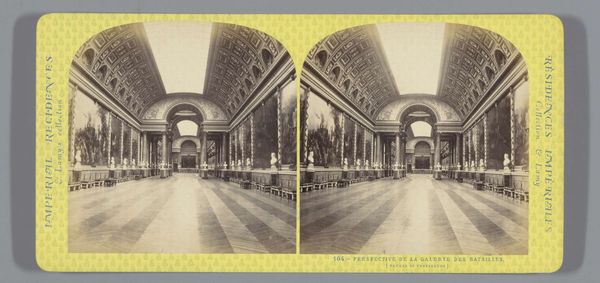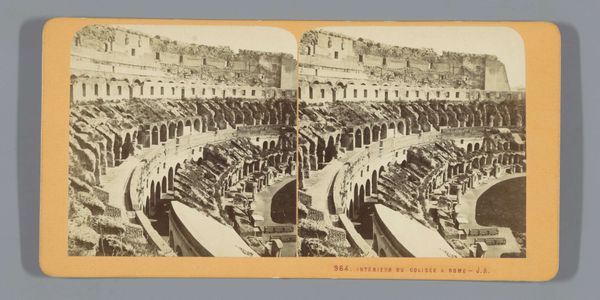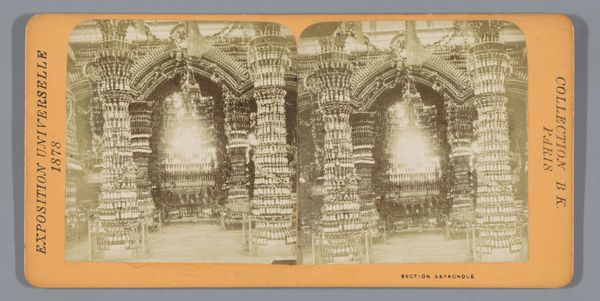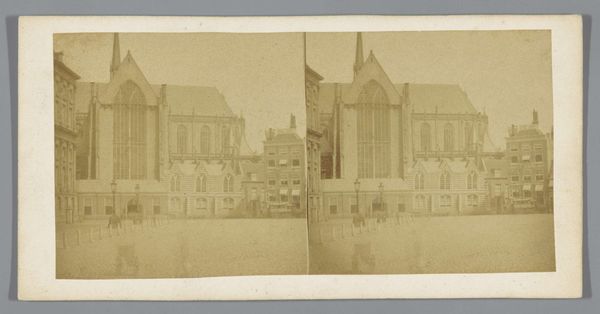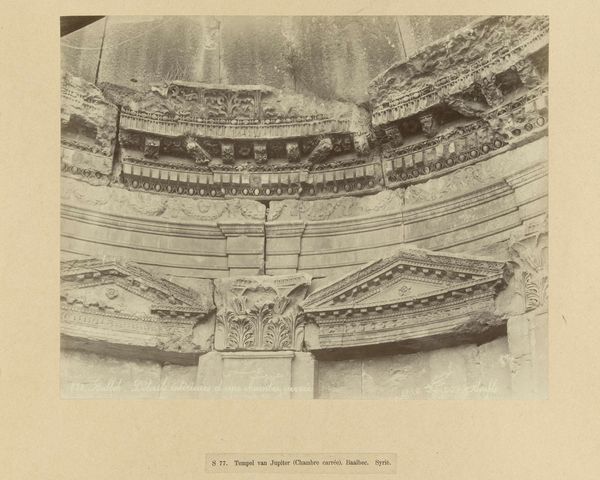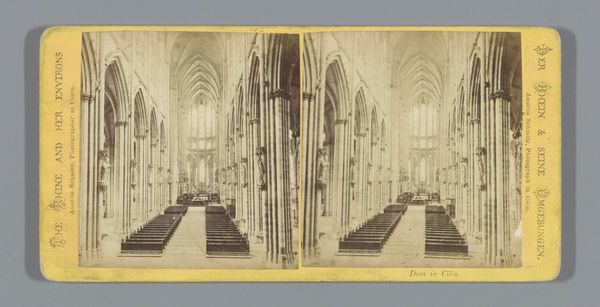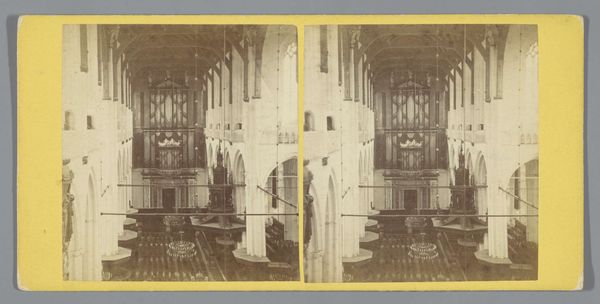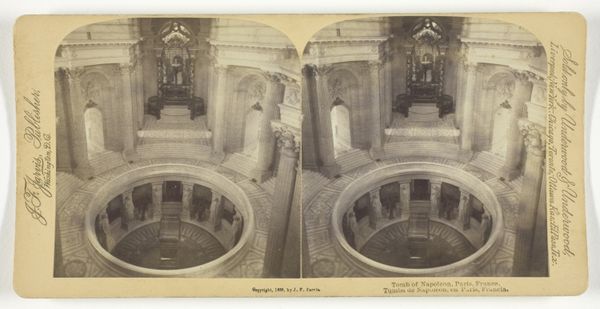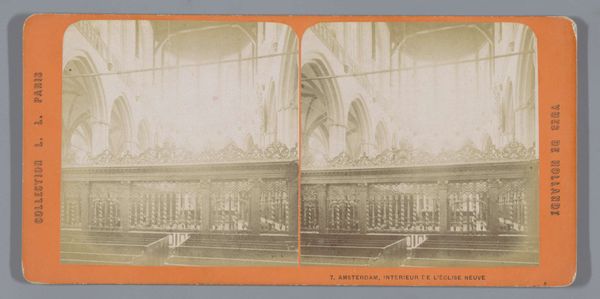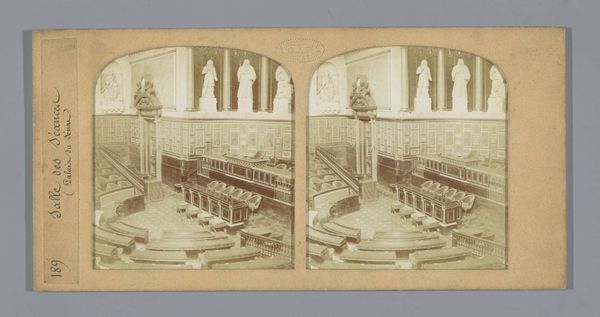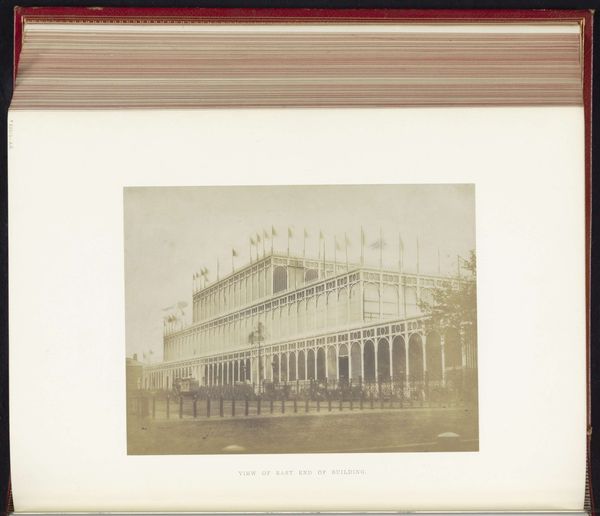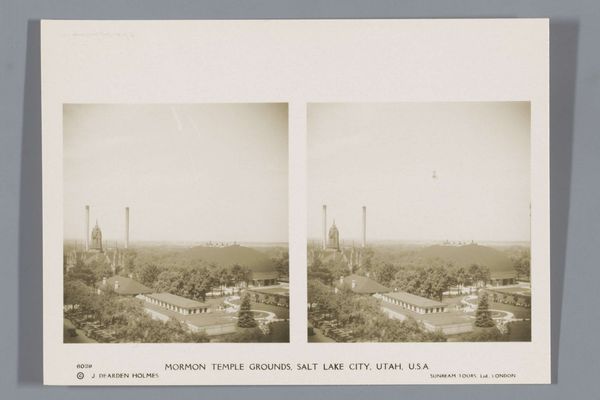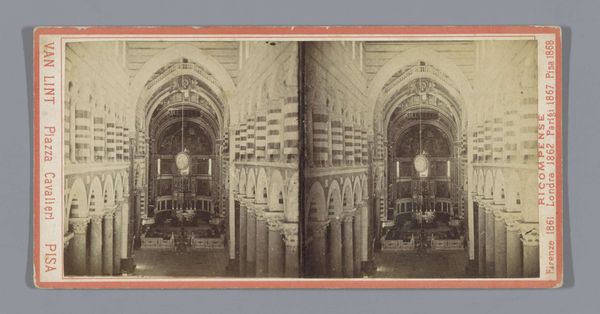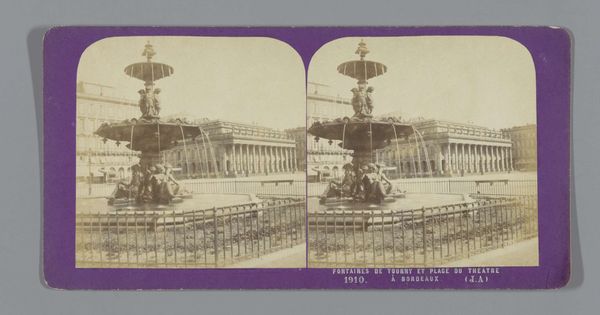
Orgel in de tempel van de Heiligen der Laatste Dagen, in Salt Lake City 1924 - 1926
0:00
0:00
print, photography, architecture
# print
#
landscape
#
photography
#
architecture
Dimensions: height 83 mm, width 115 mm
Copyright: Rijks Museum: Open Domain
Editor: This is a photographic print from between 1924 and 1926 by J. Dearden Holmes, titled "Orgel in de tempel van de Heiligen der Laatste Dagen, in Salt Lake City," or "Organ in the temple of the Latter-day Saints, in Salt Lake City." The symmetry is really striking; it's almost overwhelming, and that organ just dominates the entire space. What do you see in this piece, particularly in terms of its formal elements? Curator: Indeed, the formal composition presents a fascinating study. Note the stark contrast between the sharp geometric lines of the pews and the ornate, almost baroque, curves of the organ. Consider how this interplay dictates the viewer's eye movement—vertically up the converging lines of the seating, then abruptly halted by the complex mass of the instrument. The photographic medium itself is significant; how does the monochrome palette influence our perception? Editor: It feels like it flattens the space, emphasizing the lines and shapes rather than depth. Curator: Precisely. The absence of color forces us to focus on tonal variations, on the light and shadow that model the forms. And what of the composition being split in two identical copies, what is your take on this peculiar and unconventional choice? Editor: The mirrored composition adds to the symmetry and intensifies the feeling of grandeur, or maybe even replicates how it appears in real life? Curator: An interesting suggestion! While we might consider that it does replicate the real-world image in this particular case, there might be alternative intentions such as questioning authenticity by displaying two images that are presumed identical, even though the technical possibilities of that time could easily generate slight variation that the viewer might look to discover, actively engaging with the photograph, or even attempting to see depth. Editor: So by stripping away the color and emphasizing the geometric forms and the potential flaws in a reproduction, the image compels us to analyze the building, organ and the photograph itself, rather than simply looking at a pretty picture. Curator: Exactly. It is a reminder that even seemingly straightforward representational images are constructed artifacts, governed by artistic choices.
Comments
No comments
Be the first to comment and join the conversation on the ultimate creative platform.
